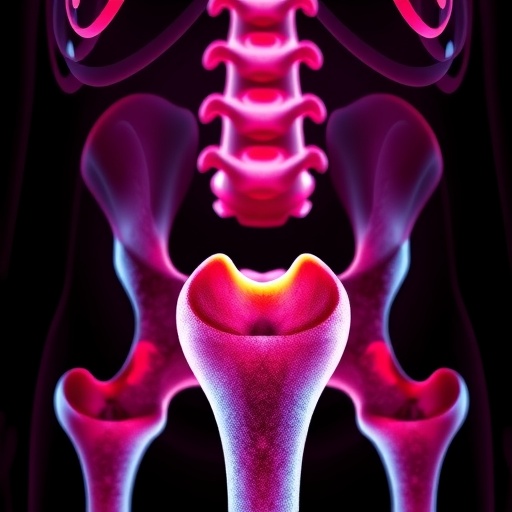Immune checkpoint inhibitors (ICIs) have revolutionized cancer therapy, opening new horizons in the fight against malignancies by unleashing the immune system’s power to target tumor cells. Yet, as their clinical use expands, so does the awareness of serious immune-related adverse events (irAEs), among which myocarditis and pericarditis—forms of cardiac inflammation—have emerged as particularly alarming complications. A groundbreaking pharmacovigilance study published in BMC Cancer has undertaken a rigorous analysis of the U.S. FDA Adverse Event Reporting System (FAERS) database to elucidate the association between ICIs and these cardiac toxicities, uncovering significant signals that could have profound implications for clinical practice and patient safety.
The study systematically extracted data spanning nearly a decade, from the first quarter of 2014 through the last quarter of 2023, identifying a total of 1,112 cases involving 1,134 adverse event reports specifically linked to ICI-associated noninfectious myocarditis and pericarditis (NM/P). This scope of data—carefully curated from a vast pharmacovigilance repository—provides an unparalleled real-world insight into the epidemiology and risk factors underpinning these life-threatening complications.
A key finding of the research lies in the demographic and clinical profiles of affected patients. The median age was 67 years, indicating a preponderance of older adults in the reported cases, consistent with the typical cancer patient population receiving ICIs. Men were disproportionately represented, suggesting potential sex-related susceptibility that warrants further immunological and pharmacogenomic investigation. The median body weight was recorded at 65 kilograms, although an intriguing trend emerged: patients weighing 75 kilograms or more appeared to face heightened risk, indicating that body mass might modulate drug pharmacodynamics with implications for dosage and monitoring.
.adsslot_5pVKA8xWCO{ width:728px !important; height:90px !important; }
@media (max-width:1199px) { .adsslot_5pVKA8xWCO{ width:468px !important; height:60px !important; } }
@media (max-width:767px) { .adsslot_5pVKA8xWCO{ width:320px !important; height:50px !important; } }
ADVERTISEMENT
Temporal analysis revealed a median onset time of just 28 days from initiation of ICI therapy to the manifestation of myocarditis or pericarditis symptoms. This rapid timeline underscores the necessity for vigilant cardiac monitoring early in treatment courses, as delayed recognition can culminate in severe morbidity or mortality. Indeed, the mortality risk associated with these cardiac irAEs was markedly elevated, particularly in patients treated with nivolumab and pembrolizumab, two of the most widely prescribed programmed death-1 (PD-1) inhibitors.
From a pharmacovigilance standpoint, the study applied two sophisticated disproportionality analysis techniques: the Bayesian Confidence Propagation Neural Network (BCPNN) and the Reporting Odds Ratio (ROR). These statistical methods serve to detect and quantify signals of potential drug-associated adverse effects by contrasting observed reports against expected baselines. The results pointed to a hierarchy of risk, where pembrolizumab exhibited the strongest signal (ROR: 12.32, IC 025: 3.45), followed closely by nivolumab (ROR: 11.23, IC 025: 3.30), indicating more than a tenfold increase in reporting frequency for NM/P compared to other agents. Similarly, atezolizumab, ipilimumab, and durvalumab displayed significant but slightly lower signals, suggesting that while the risk is inherent to the ICI class, it may vary based on specific molecular targets or drug structures.
Importantly, the combination of nivolumab and ipilimumab—a regimen increasingly favored for its synergistic antitumor efficacy—emerged as a notable risk factor. The amplified immune activation achieved by dual checkpoint blockade appears to come at the cost of increased cardiac irAEs, demanding a fine balance between therapeutic benefit and safety vigilance. This insight compels oncologists and cardiologists to collaborate closely in managing patients slated for combination immunotherapy.
The underlying mechanisms driving ICI-induced myocarditis and pericarditis remain an active area of scientific inquiry. It is hypothesized that immune checkpoint blockade disrupts self-tolerance by unleashing autoreactive T-cells against cardiac tissues, thereby initiating inflammatory cascades and tissue injury. This autoimmune-like pathology differs fundamentally from infectious or ischemic causes and necessitates targeted immunosuppressive interventions to reverse cardiac inflammation and preserve function.
Emerging evidence also suggests that certain patient-specific factors, such as baseline immune status, genetic predispositions, and concurrent medications, could modulate the risk profile for cardiac toxicities. The present pharmacovigilance analysis provides a foundational dataset that could inform future prospective studies aimed at delineating predictive biomarkers and personalized risk stratification tools.
The geographic distribution of reports highlights a predominance from the United States and Japan, reflecting both the widespread clinical adoption of ICIs in these regions and possibly differences in pharmacovigilance infrastructure and reporting cultures. Engaging diverse populations globally in active surveillance will be critical to ascertain the universality of these findings and to address potential disparities.
As the oncology community embraces ICIs as mainstays in treating a range of solid tumors and hematologic malignancies, this study serves as a clarion call to integrate cardiac safety monitoring protocols into routine clinical workflows. Early detection of myocarditis and pericarditis—through biomarkers such as troponins, echocardiography, and cardiac MRI—paired with prompt intervention can mitigate severe outcomes.
Ultimately, the balance between therapeutic efficacy and toxicity management defines the future of cancer immunotherapy. The insights gleaned from this large-scale FAERS analysis emphasize the need for heightened awareness, proactive monitoring, and multidisciplinary care to safeguard patients from potentially fatal cardiac adverse events.
The implications of this research resonate beyond clinical oncology. They prompt pharmaceutical developers to innovate next-generation ICIs with reduced off-target immune activation and encourage regulatory agencies to refine post-marketing surveillance frameworks that incorporate sophisticated analytics like BCPNN and ROR. Moreover, the establishment of international registries dedicated to immune-related cardiotoxicity could expedite knowledge dissemination and best practice formulation.
In conclusion, immune checkpoint inhibitor-associated myocarditis and pericarditis represent formidable challenges in cancer therapeutics. This comprehensive pharmacovigilance study illuminates significant risk signals, identifies susceptible patient subgroups, and underscores the urgency of integrating cardiology expertise into oncologic care paradigms. As immunotherapy continues to evolve, such data-driven insights are indispensable to maximizing patient benefit while minimizing harm, ultimately advancing the frontier of personalized cancer treatment.
Article Title: Immune checkpoint inhibitor-associated myocarditis and pericarditis: a pharmacovigilance study based on the FAERS database
Article References:
Yao, G., Zhang, Y., Zhang, H. et al. Immune checkpoint inhibitor-associated myocarditis and pericarditis: a pharmacovigilance study based on the FAERS database. BMC Cancer 25, 1294 (2025). https://doi.org/10.1186/s12885-025-14668-x
Image Credits: Scienmag.com
DOI: https://doi.org/10.1186/s12885-025-14668-x
Tags: cancer therapy adverse eventsclinical implications of ICI usedemographic profiles of affected patientsepidemiology of heart inflammationFDA Adverse Event Reporting Systemheart inflammation complicationsICI-associated cardiac toxicitiesimmune checkpoint inhibitorsimmune-related adverse eventsmyocarditis and pericarditispharmacovigilance study findingsrisk factors for myocarditis





